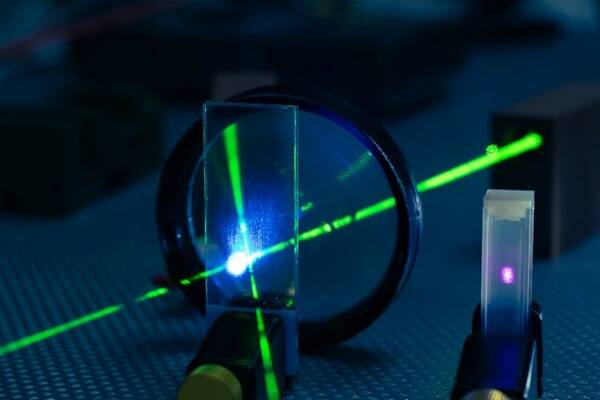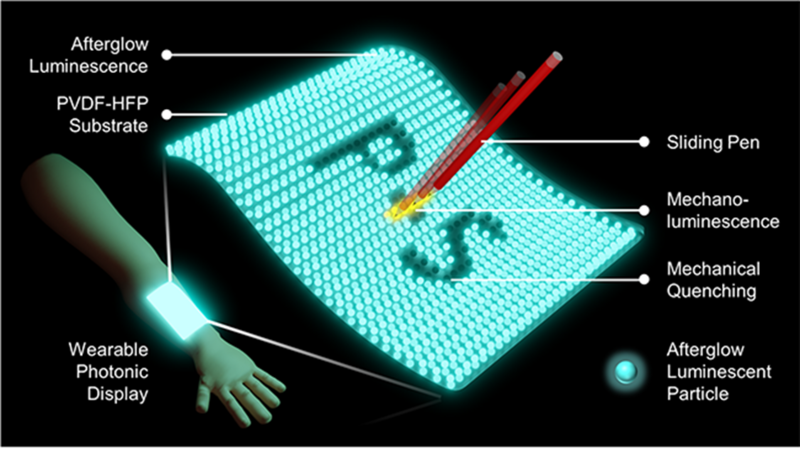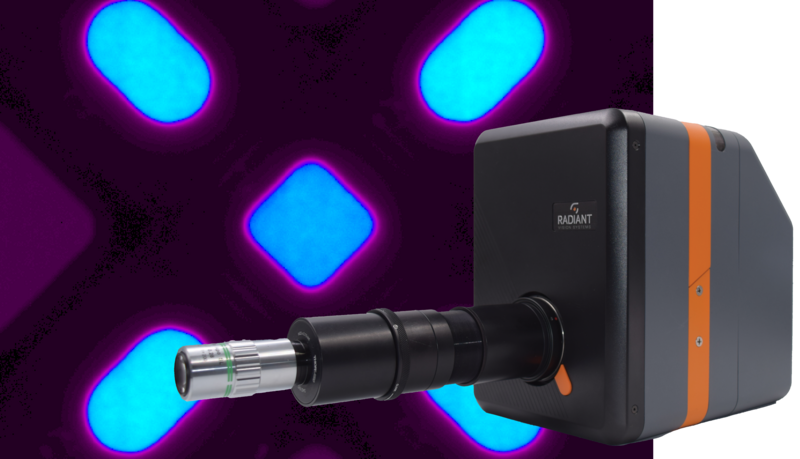The Latest Advancements in Optics
Most humans rely heavily on our visual abilities to function in the world—we are optically oriented. In the broadest sense, “optics” refers to the study of sight and light. At its foundation, Radiant’s business is all about optics: measuring light and the properties of light in relation to the human eye. Photometry is the science of light according to our visual perception. Colorimetry is the science of color: how our eyes interpret different wavelengths of light.

Optics are used in a vast range of applications in virtually every sector of human endeavor, from scientific microscopes to medical diagnostic imaging, from automobile headlights to telescopes pointed at the stars. “There are many types of optics and when it comes to the specifications for these optics, there are two types:
- “The first type of optics is used mainly to transmit the light or reflect/bounce off the light, with image quality or other optical performance not being an important criterion. These optics include light reflectors, beverage bottles, windows, chandeliers, etc.
- In the second type of optics, the image quality or other optical performance (such as wavefront, diffraction efficiency, etc.) are quite important and must be satisfied, as in camera lenses, laser optics, projectors…displays, diffraction optics, etc.”1
Optical Advancements in 2023-2024
The past 14 months have brought some exciting developments in optics, including:
Underwater Touchscreens
When afterglow luminescent materials are exposed to light, they can absorb and hold some of that light, releasing it over time after the original light source (such as an infrared lamp or the sun) is removed. The release can be triggered by pressure on the material. This property can be useful in applications such as environmental remediation, biosensing, and cancer treatment. Recently, a team of researchers from Pohang University of Science and Technology (POSTECH) were able to use afterglow luminescent particles (ALPs) in a wearable polymeric patch that can operate underwater.
“The display patch had the capability to convey information through writing with a small amount of pressure applied by the finger. When exposed to ultraviolet rays, the patch resets to a blank state, similar to erasing content from a sketchbook using an eraser.”2 Potentially, these patches can be used for communicating underwater, or in low-light, high-humidity environments. Learn more…

Schematic representation of an optical display system using mechanoluminescence and mechanical quenching in afterglow luminescent particles. (Image: Source)
JWST Images Reveal the Universe
The James Webb Space Telescope (JWST) was launched on Christmas day in 2021, and since July 2022 it’s been showing humanity never-before-seen views of our universe in unprecedented resolution and detail. How it delivers these incredible images is a triumph of optical engineering. The JWST is “the most powerful and complex space telescope ever built, with a 6.5-meter mirror and four sophisticated instruments that can capture infrared light from the most remote and ancient regions of the cosmos.”3 Learn more…
Image of Jupiter from the JWST in infrared. “In this image, brightness indicates high altitude. The numerous bright white ‘spots’ and ‘streaks’ are likely very high-altitude cloud tops of condensed convective storms. Auroras, appearing in red in this image, extend to higher altitudes above both the northern and southern poles of the planet. By contrast, dark ribbons north of the equatorial region have little cloud cover.”4 (Image: NASA, ESA, CSA, STScI, R. Hueso (University of the Basque Country), I. de Pater (University of California, Berkeley), T. Fouchet (Observatory of Paris), L. Fletcher (University of Leicester), M. Wong (University of California, Berkeley), J. DePasquale (STScI) )
The New Atto Frontier
From the vastness of space to ultra-micro scale measurement at the “atto” level, optics spans it all, as seen in these recent breakthroughs:
Capturing X-Ray of a Single Atom
Researchers at Argonne National Laboratory have developed a method to characterize a single atom of material. “Until now, the smallest sample size that could be analysed [sic] was an attogram, which is around 10,000 atoms”5 (1 attogram = 1 millionth of a trillionth of a gram, or 10-21 kg). This new technique, called synchrotron X-ray scanning tunnelling microscopy (SX-STM) “will allow for the design of advanced materials with properties tuned to specific applications,”5 including uses in environmental and medical research. Learn more…
Nobel Prize For Imaging Electron Movement
2023 was also notable for the fact that the Nobel Prize in Physics was awarded for work in optics. Extremely fast motion—such as the single beat of a hummingbird’s wings, can be impossible to see and difficult to photograph—it’s just a blur. Using high-speed photographic exposures and a strobe light lets us capture a clear image, but only if the exposure time is shorter than the time for a wingbeat.
Similarly, atomic movement is incredibly fast, measured in femtoseconds (1 femtosecond is 1 millionth of a billionth of a second, 10-15). Electrons inside of atoms move even faster—at the speed of attoseconds (1 attosecond is 1 billionth of a billionth of a second, 10-18).
Pierre Agostini, Ferenc Krausz and Anne L’Huillier received a joint prize "for experimental methods that generate attosecond pulses of light for the study of electron dynamics in matter."6

L-R: Ferenc Krausz, Anne L’Huillier, and Pierre Agostini, joint winners of the 2023 Nobel Prize in physics.
In their research, these three scientists were able to create “flashes of light that are short enough to take snapshots of electrons’ extremely rapid movements. Anne L’Huillier discovered a new effect from laser light’s interaction with atoms in a gas. Pierre Agostini and Ferenc Krausz demonstrated that this effect can be used to create shorter pulses of light than were previously possible.”7 Their work has opened up the new field of attosecond physics. Learn more...
The Optics of Measuring Displays
In the metrology industry, “optics” can refer to specific components of measurement equipment and systems. Our ProMetric® cameras are made up of multiple components, including a sensor, various electrical parts to power the system, an exterior case, and mechanical parts that move during operation. For example, the aperture opens and closes to let in light so the sensor can record an image. In the context of a camera, the “optics” refers only to those components that directly transmit and manipulate light, primarily the lenses.
The increasing use of optics in automobiles and devices like AR/VR headsets creates a growing demand for more sophisticated optical solutions for measurement. Radiant saw the need for a wider variety of lens optics for different specialized measurement scenarios. In response, our Optics and Development teams have designed and built many new specialized lens products and solutions. But our innovation isn’t only about the lenses and camera hardware—our software is a critical piece of every solution. We use high-quality optical components to capture high-quality images, but it’s our sophisticated software tools and algorithms that can integrate, process, and analyze these camera images to provide the information our customers need.
Take a look at some of the optics solutions that Radiant has been responsible for in recent years, helping to advance the field of precision optics in display measurement.
The Optics of MicroLED Displays
Measuring atoms and electrons in atto-scale may not be part of Radiant’s business, but the continuing evolution of the display industry demands that our solutions provide measurement of smaller and smaller elements, such as the micron-scale pixels and subpixels of microLED displays.
The latest addition to our portfolio of optical products is the 20X Microscope Lens. With 20 times magnification power, it lets manufacturers inspect tiny OLED and microLED pixels and subpixels that can measure only a few microns across (1 micron = one millionth of a meter, or 1/1000th of a millimeter, ). Used with our ProMetric® Imaging Photometers and Colorimeters, the 20X Microscope Lens enables a greater number of image sensor pixels to be applied per display pixel for fine-detail measurement.
The lens magnifies details of the display sensor while capturing display pixels and subpixels over several sensor pixels of high-resolution image sensors for increased measurement precision. This combination of value, high performance, and flexibility offers manufactures easy-to-use measurement control, optimizing testing efficiency and supporting advanced analysis.

Emissive display subpixel luminance shown in false color scale. Inset: Radiant 20X Microscope Lens with ProMetric® I-Series Imaging Colorimeter.
Once measured, discrepancies in output from pixel to pixel can be calculated and applied as corrections. This normalization of pixel outputs (called demura) produces a display of entirely uniform appearance. These calibrations can be carried over from design to ensure accurate pixel output for the given substrate or pixel layout of devices in production operations.
As the optics of displays continue to advance, Radiant continues to develop new optical solutions that let developers and manufacturers measure the parameters they need to ensure quality.
CITATIONS
- Ng, Brian, “Precision Optics Changing 2024: Shaping the Future,” Wavelength Opto-Electronics, https://wavelength-oe.com/articles/precision-optics. Published June 30, 2023 (accessed March 11, 2024).
- “Powerless Mechanoluminescent Touchscreen Underwater,” POSTECH University News: Research Highlights. March 6, 2024.
- Labh, S., “The Biggest Physics Breakthroughs of 2023,” Medium, published in Cantor’s Paradise, December 30, 2023.
- “NASA’s Webb Discovers New Feature in Jupiter’s Atmosphere,” NASA Webb Telescope Team, NASA.gov. October 19, 2023.
- Dumé, E., “Synchrotron X-rays image a single atom,” Physics World, July 3, 2023
- The Nobel Prize in Physics 2023. NobelPrize.org. Nobel Prize Outreach AB 2024. https://www.nobelprize.org/prizes/physics/2023/summary/ (Accessed March 12, 2024.)
- Popular information. NobelPrize.org. Nobel Prize Outreach AB 2024. https://www.nobelprize.org/prizes/physics/2023/popular-information/ (Accessed March 12, 2024)
Join Mailing List
Stay up to date on our latest products, blog content, and events.
Join our Mailing List
